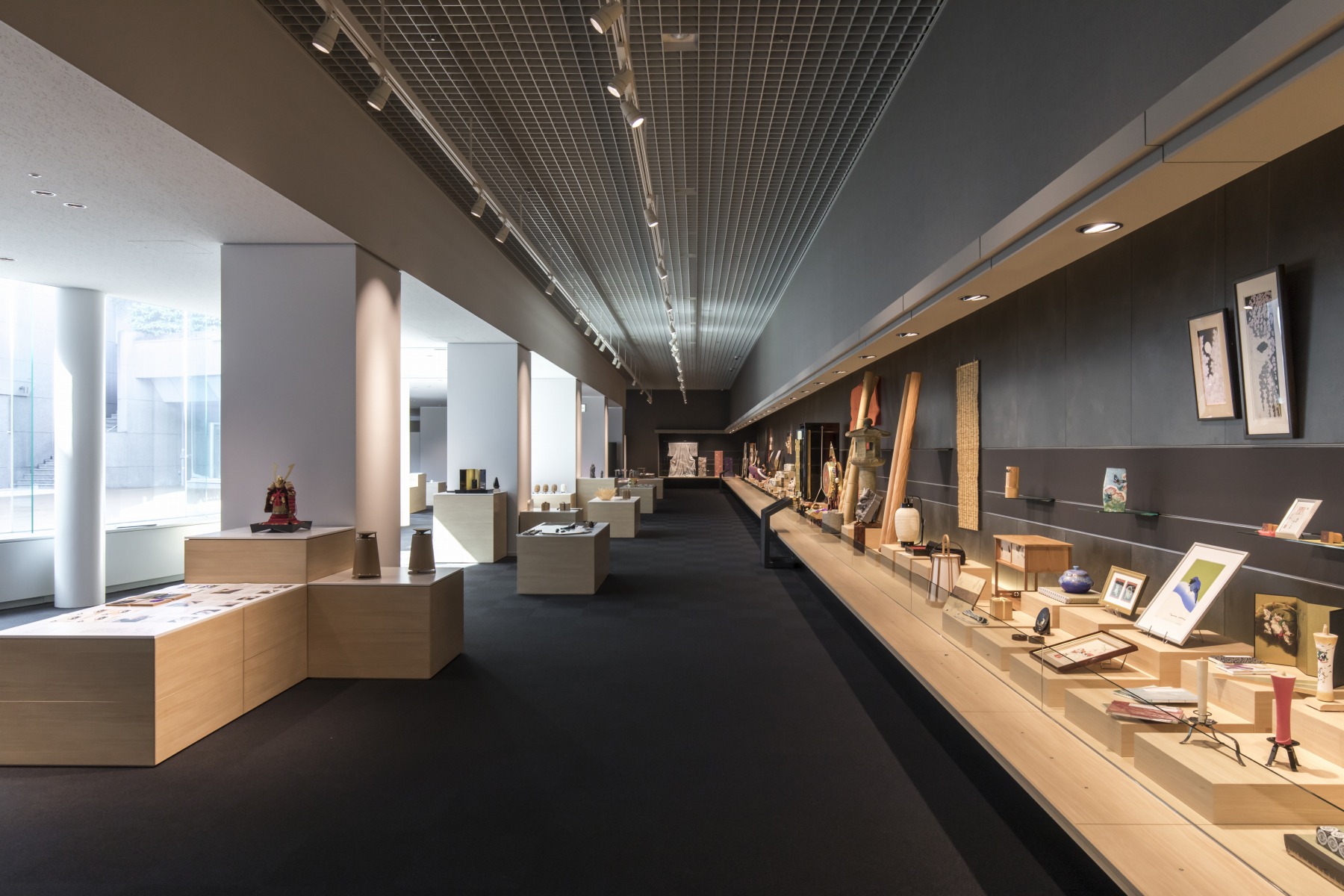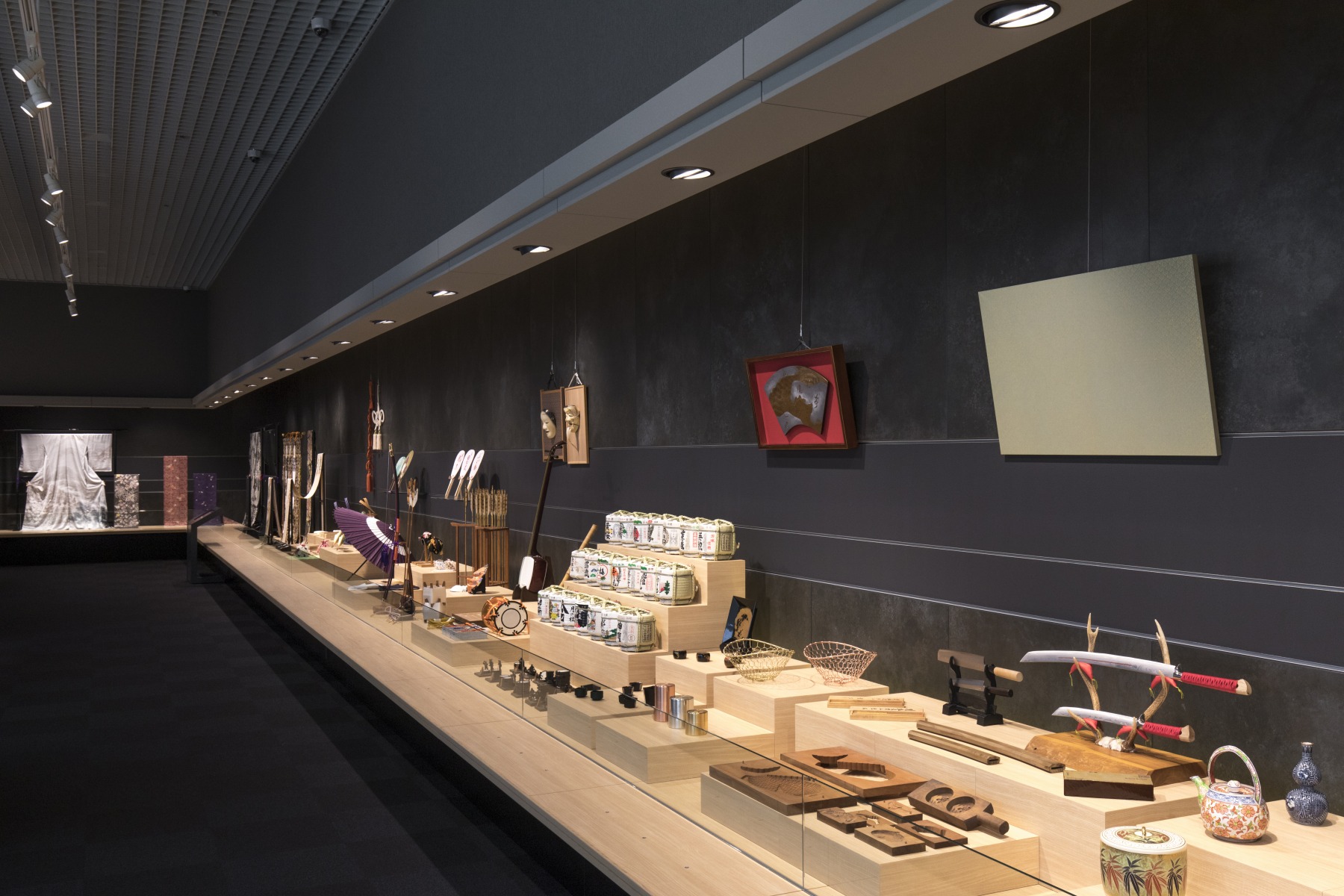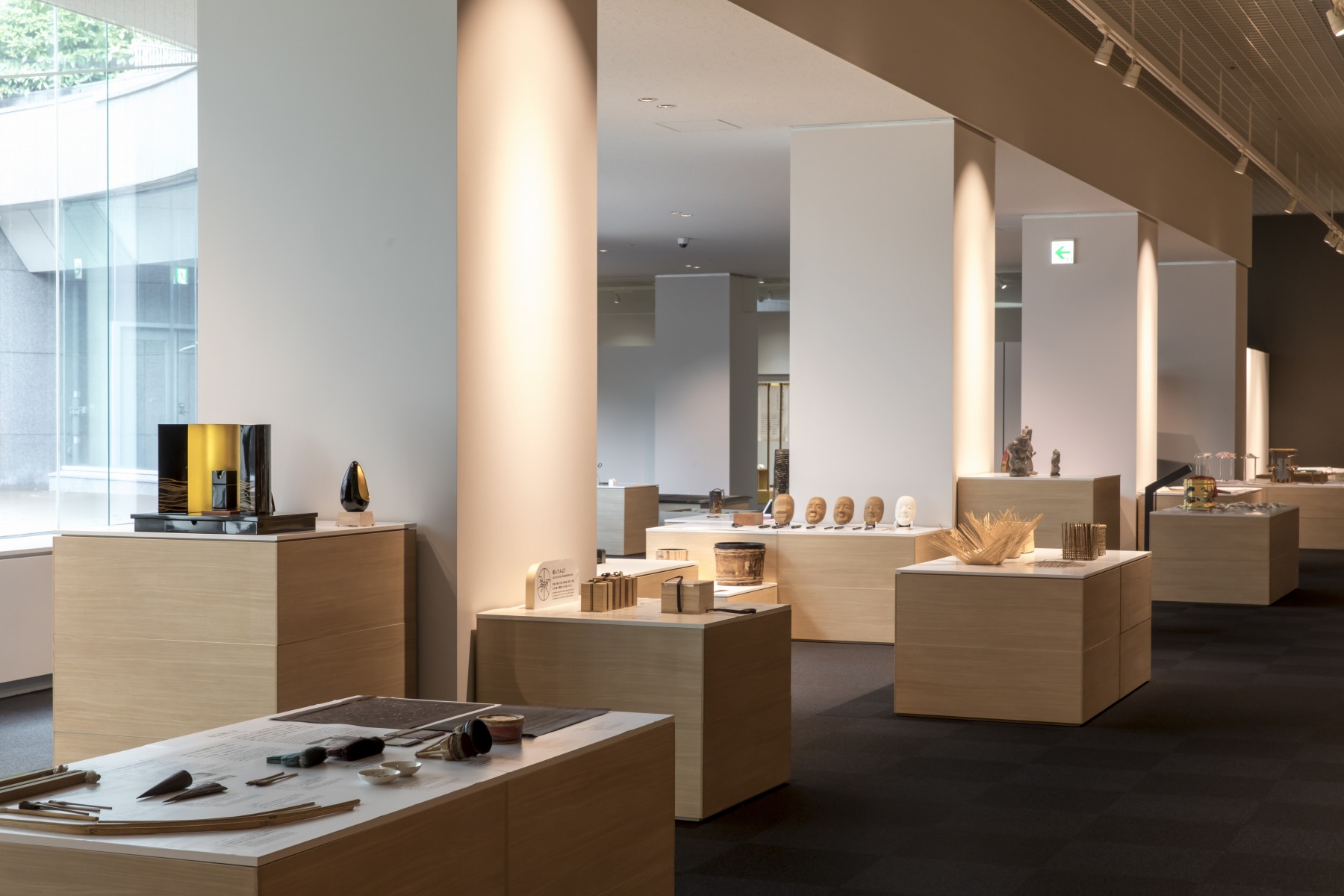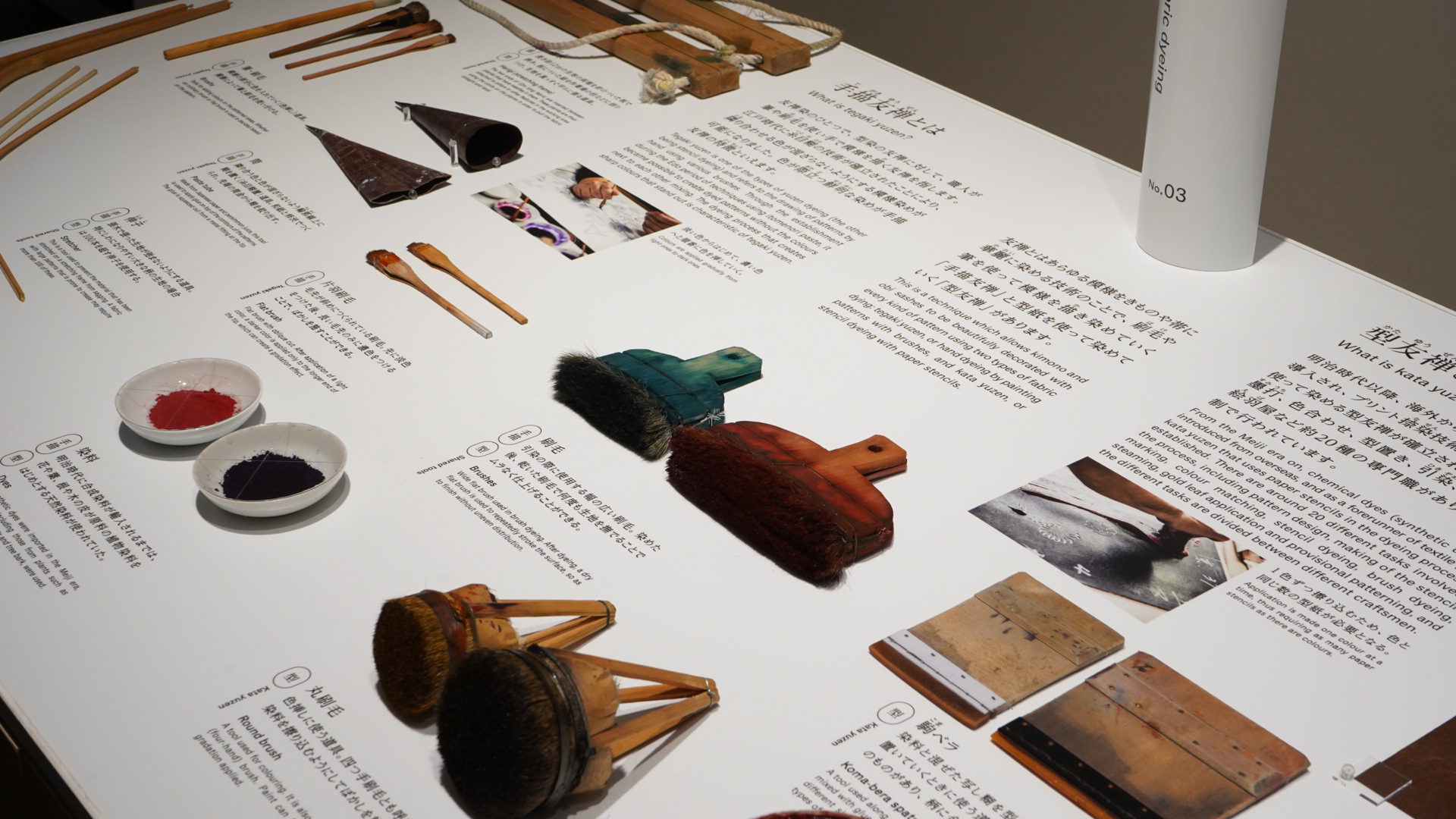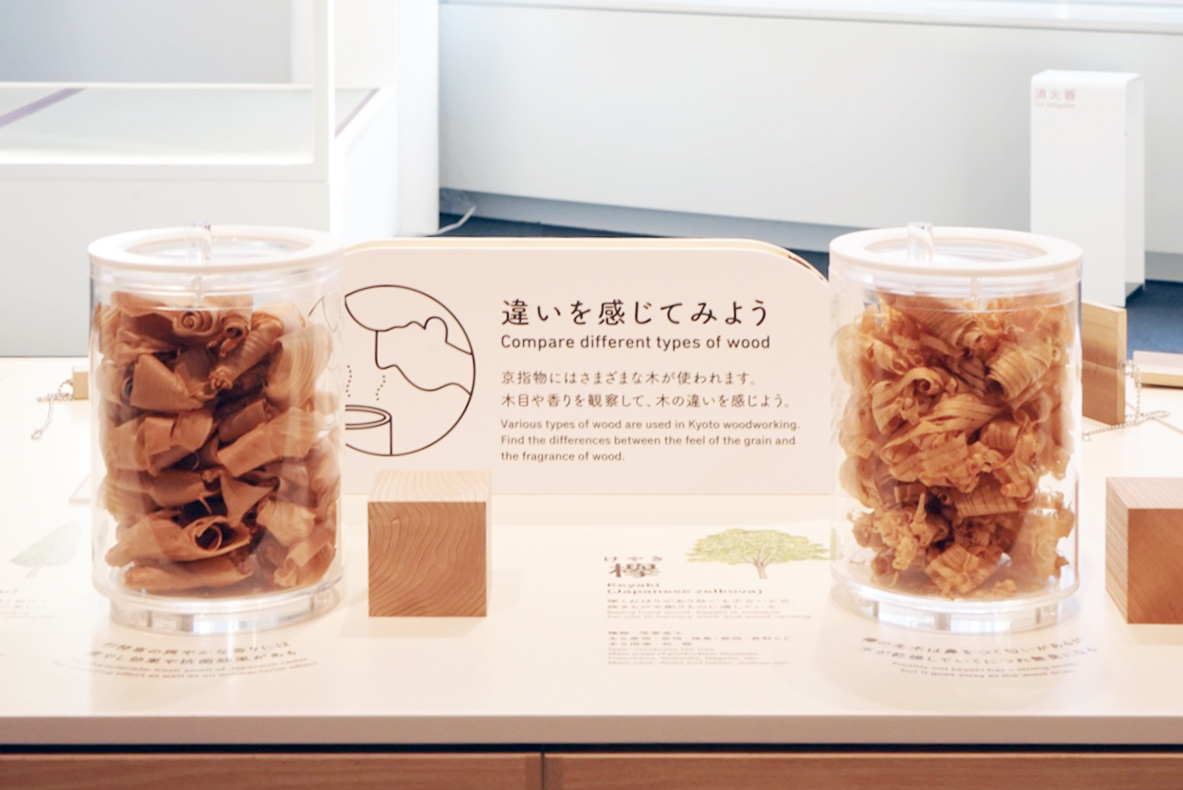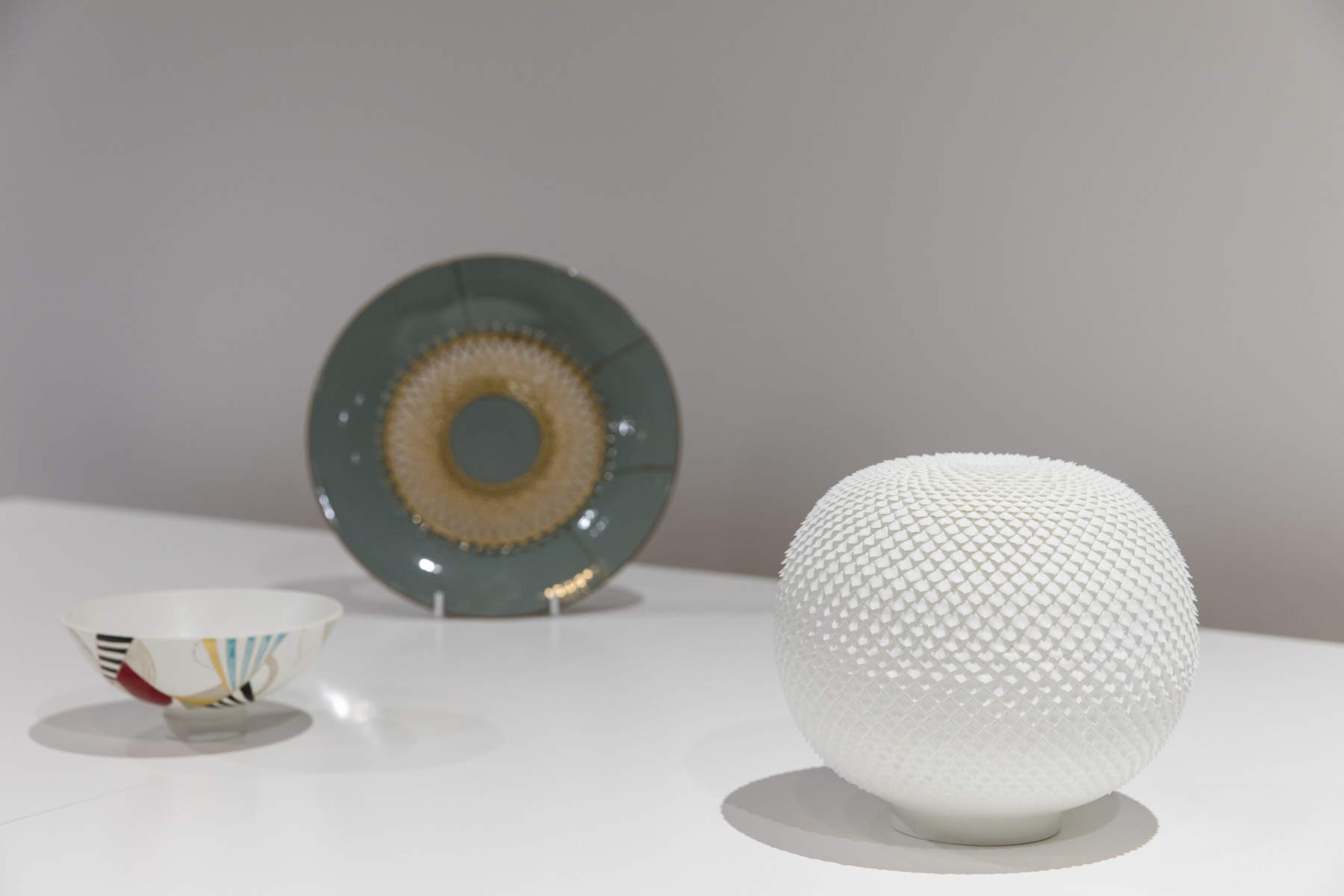PERMANENT EXHIBITION
HOME > EXHIBITION > PERMANENT EXHIBITION
About permanent exhibition
Traditional crafts are the essence of Kyoto history and culture, and Kyoto Museum of Crafts and Design is the only place where all of them can be discovered at once — permanent exhibition brings together all the 74 categories of Kyoto traditional industries. Crafts and their techniques are introduced and explained one by one through 200 artifacts, panel displays and videos.. A craft lovers’ paradise!
74CRAFTS WALL
74 CRAFTS WALL is the largest display wall in Japan which exhibits all the 74 categories of Kyoto traditional crafts. Touch panel displays provide detailed item descriptions and images of production processes, which allow visitors to engage with each exhibit.
74CRAFTS EXHIBITION
74 CRAFTS EXHIBITION offers an interactive experience for visitors. By introducing craft production processes, materials and tools used in craft making, works and activities of craftsmen and craft demonstrations in various categories, 74 CRAFTS EXHIBITION assists visitors in learning more about 74 traditional crafts of Kyoto.
Craft items with price tag are on sale. Please let us know if something pleases your eye!
Kyoto traditional crafts
Gaku-kanban (wooden signs), Kyo-ishi-kogeihin (Kyoto stone crafts), Kyo-gawara (Kyoto roof tiles), zoen (landscape gardening), Kyo-yuzen (Kyoto yuzen dyeing), Kyo-komon (Kyoto komon dyeing), Kyo-kanoko-shibori (Kyoto tie-dyeing), Kyo-kuromontsuki-zome (Kyoto kuromontsuki-zome dyeing), Kyo-fusahimo・yorihimo (Kyoto twisted cords with tassels), Kyo-kumihimo (Kyoto braided cords), Nishijin-ori (Nishijin woven textiles), Kyo-nui (Kyoto embroidery), Kyo-tabi (Kyoto tabi socks), Kyo-fukuromono (Kyoto bags and pouches), hanakanzashi (ornamental hairpins), katsura (wigs for actors and actresses), Kyo-tsugegushi (Kyoto boxwood combs), Kitayama-maruta (Kitayama cedar logs), Kyo-meichiku (Kyoto bamboo), Kyo-wagasa (Kyoto umbrellas), chochin (paper lanterns), Kyo-tsuzura (Kyoto lacquered bamboo boxes), kiseru (tobacco pipes), Sagamen (Saga masks), Fushimi ningyo (Fushimi dolls), take-kogei (bamboo crafts), Kyo-sudare (Kyoto bamboo blinds), Kyo-sensu (Kyoto folding fans), Kyo-uchiwa (Kyoto round fans), Kyo-maru-uchiwa (Kyomaru fans), Kyo-to-ningyo (Kyoto pottery dolls), Kyo-ningyo (Kyoto dolls), Kyo-yaki・Kiyomizu-yaki (Kyoto pottery), Kyo-shikki (Kyoto lacquerware), Kyo-tatami (Kyoto tatami mats), Kyo-hyogu (Kyoto mountings), Kyo-hanga (Kyoto woodblock prints), Kyo-no-shikishi-tanzaku-wahoncho (Kyoto shikishi, tanzaku and wahoncho paper), karuta (playing cards), karakami (paper for sliding doors), Kyo-insho (inkoku) (Kyoto seals), chazutsu (tea caddies), Kyo-koma (Kyoto spinning tops), yuino-kazari・mizuhiki-kogei (engagement decorations and paper cord crafts), kogei-gashi (craft confectionery), kashi-kigata (confectionery molds), seishu (sake), Kyo-hamono (Kyoto cutlery), kanaami-zaiku (wire netting crafts), hanpusei kaban (canvas bags), Kyo-gashi (Kyoto confectionery), Kyo-ryori (Kyoto cuisine), Kyo-tsukemono (Kyoto pickles), Kyoto-no-kinzoku-kogeihin (Kyoto metal crafts), Kyo-shippo (Kyoto cloisonné), Kyo-zougan (Inlays), kirikane (gold leaf work), dento kenchiku (traditional architecture), Kyo-sashimono (Kyoto woodwork), Kyo-sanadahimo (Kyoto sanadahimo cords), juzu (Buddhist rosaries), nenju-tama (Buddhist rosary beads), Kyo-butsudan (Kyoto Buddhist household altars), Kyo-butsugu (Kyoto Buddhist paraphernalia), warosoku (Japanese candles), kunko (incense), nomen (Noh masks), shirabeo (linen tuning ropes), shakuhachi (bamboo flute), shamisen (3-stringed Japanese lute), hogakki-ito (strings for Japanese musical instruments), Kyo-yumi (Kyoto bows), ya (arrows), Kyo-no-jingi-shozoku-chodohin (Kyoto Shinto crafts)





